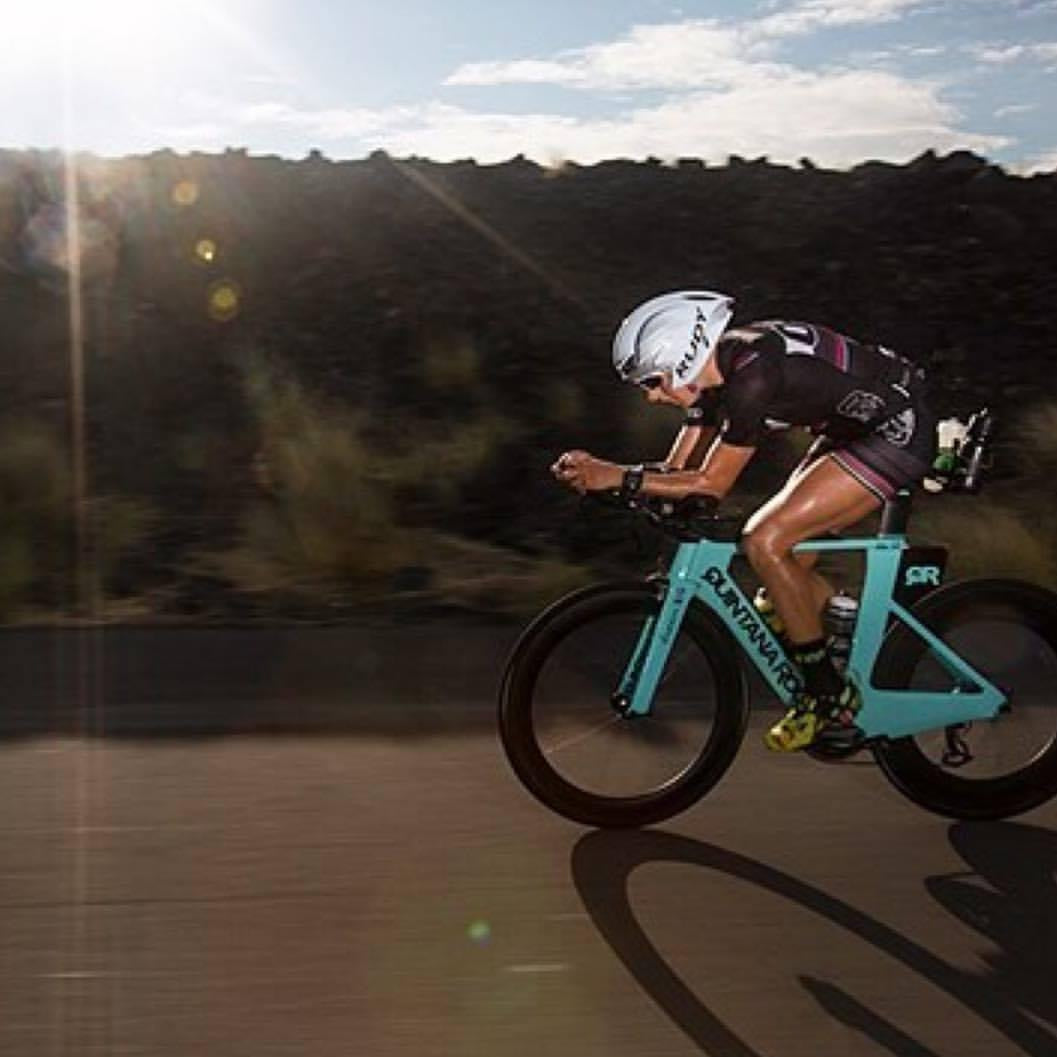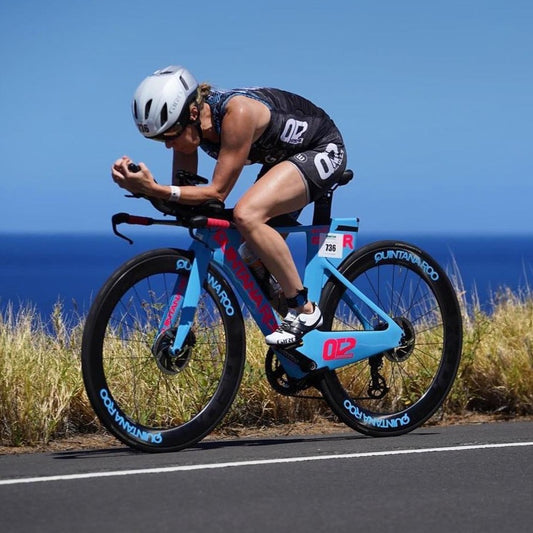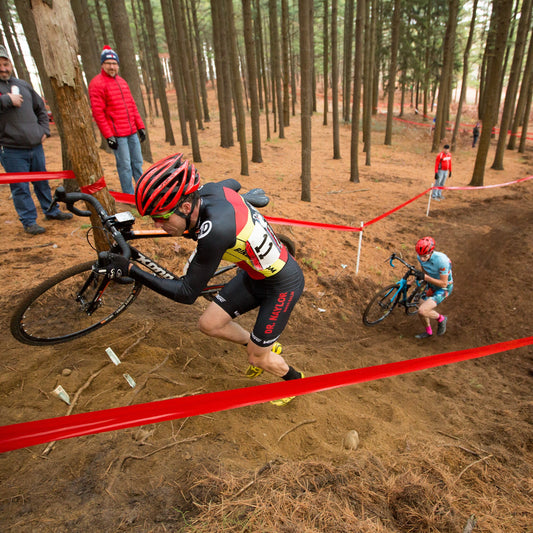This article was written by Martin Bonnevie-Svendsen MD, and posted on The Wattkg.com website, HERE.
In the early 2020s, a concept called durability exploded onto the stage of cycling science.
For some riders and coaches, the concept explains behaviour they have long experienced. For others, it may represent unfamiliar terrain. And perhaps, a door through which you can venture to vastly outperform yourself.
If durability is indeed a pivotal concept to performance, it could have implications for how to test and monitor your performance.
I would dare the opinion that once you grasp this concept, you may find yourself one small step closer to realising your boldest cycling ambitions.
Let us dig in to durability and why it could considerably impact your performance.
What is durability?
Let us rewind the clock.
Back to April 2021.
At this point in time, Maunder (@maunder_ed) and colleagues published a review called The Importance of ‘Durability’ in the Physiological Profiling of Endurance Athletes(1).
Maunder et al argue that conventional methods of assessing endurance performance do not account for the fact that the measured variables will change over time.
Example: If you start riding at a constant power of 200W, that will result in a given volume of oxygen consumption. At this point, you are riding with fresh legs and topped up glycogen stores. However, hours into that ride, maintaining the same power of 200W may yield a different volume of oxygen consumed than it did initially.
Maunder and colleagues propose that when assessing cycling performance, we should also take a property called durability into account.
They define durability as:
…the time of onset and magnitude of deterioration in physiological characteristics over time during prolonged exercise. (1)
MAUNDER ET AL, SPORTS MED 2021
Put shortly, if you fail to consider durability, you may well miss an important part of the performance picture.

So what do we know about durability to suggest it is an important aspect of performing on the bike?
As of late, quite a bit.
2021: Cycling durability data emerges
One month before the publication of Maunder’s 2021 review, another study on durability became available online.
The authors, Leo (@peter__leo) and colleagues, analysed power data from two editions of the stage race Tour of the Alps (2).
The riders in question were professional (n=8) and U23 UCI Continental Team (n=9) riders.
Leo et al found few differences in absolute power between the pro and U23 riders.
However, when looking at relative power outputs (power:weight ratio), an interesting picture emerged.
During the later parts of the stages, professional riders displayed higher relative power outputs than the U23 riders. More specifically, this difference was visible in efforts ranging from 5 seconds to 5 minutes and from 5 minutes to 30 minutes. And it emerged after 1000-3000 kJ of work performed.
Interestingly, the authors found that these power profiles (after considerable work done) was able to predict racing results (General Classification standing and UCI points). Which is to say it seems to be a link between durability and race performance in the Tour of the Alps.
As it turns out, Leo’s work was to be followed by a plethora of publications on durability over the next two years.
A rapidly growing base of durability data
Come fall 2021, it becomes evident that several teams of sport scientists have been working on the durability concept for some time.
Among these were van Erp (@The_Teun) and colleagues, who examined power data from 26 professional cyclists from World Tour and PRO teams (3).
In this study, riders were categorised into climbers and sprinters, and also successfuland less successful based on results.
When van Erp and colleagues analysed power records in a rested state (0 kJ of work done), there was no difference between successful and less successful riders.
However, the authors found that successful climbers had smaller declines in 5 and 20 minute power after high amounts of work done than did less successful climbers.
Similarly, successful sprinters displayed smaller declines in 10 second sprint power than less successful sprinter after high amounts of work done (50kJ/kg). They also had a tendency of smaller declines in 1 min power after 40 kJ/kg than did less successful sprinters. However, there were no differences between successful and less successful sprinters for smaller amounts of completed work.
So far it seems the proposal of Maunder and colleagues holds true.
Durability appears to distinguish cyclists with successful race performances from riders who are less successful. And so durability emerges as a compelling feature to consider in testing and monitoring performance.
(ME)
At this stage, the durability concept is getting considerable traction.
No more than a month later, Muriel (@xabimu) and colleagues publish their paper on power data from La Vuelta 2020 (4).
Again, we see data from World Tour riders (n=8) and Pro Tour riders (n=7). The authors analysed power data from efforts ranging 5 seconds to 30 minutes, and after 0-35 kJ/kg work done.
In a fresh state (0 kJ/kg work done) during the initial race week, the World Tour riders displayed a higher power then Pro Tour riders for 30 minute efforts only. Put differently, for the majority of durations, there were few differences in power output between World tour and Pro Tour riders when their legs were fresh.
However, as fatigue accumulated (increased amount of work done), the difference in power outputs grew. With the World Tour riders showing significantly higher power outputs for 30 second, 1 minute, 5 minute, 20 minute and 30 minute efforts after 35 kJ/kg work.
In line with Leo et al and van Erp et al, Muriel and colleagues too support the notion that durability may serve as an interesting indicator of cycling performance.
2022: More studies and monster data sets
So far, the studies on durability have provided interesting results. Albeit from somewhat modest sample sizes.
Which is no fault of the authors. On the contrary, getting big sample sizes from elite groups of athletes is a challenging exercise.
For this reason, the publication of Mateo-March (@mmateo_march) and colleagues from 2022 is vastly impressive (5).
They analysed record power profiles in 112 professional cyclists from Pro Team and World Tour teams. An impressive 8 seasons of data per cyclist were assessed. Power records for effort durations ranging 10 seconds to 120 minutes were considered after no fatigue (0 kJ/kg) up to 45 kJ/kg.
As in previous studies, there was no difference in power records in World Tour and Pro Tour riders in a fresh state (0 kJ/kg work).
However, Mateo-March and colleagues found that Pro Tour cyclists displayed a greater loss of power under fatigue than did World Tour riders. And the greater the work completed, the greater the difference in power records between the two groups.

Comment to the above illustration: note how riders whose power records are in the top 10% (P10) have a much smaller drop in power records after 35 and 45 kJ/kg work done than riders whose power records were only in the top 75% (P75). Furthermore, World Tour riders seem to display a smaller drop in power after work done, than do Pro Tour riders.
The significance of the study from Mateo-March and colleagues is that it much confirms the observations made by the previously mentioned authors. Only this time, in a far more robustly sized data set.
What about durability in junior riders?
So far, the picture is pretty consistent.
Durability seems to distinguish professional riders performing at the highest level from those who are less competitive.
But no one has yet to examine durability in junior cyclists.
Enter Gallo (@knowledgeiswatt) et al and their 2022 publication.
They examined data from from 53 riders, of which 15 were juniors, 21 were U23 level and 17 were professional cyclists. All riders were categorised as climbers. They also classified riders into successful (highr) and less successful (lowr) based on their ranking points.
Data was collected from training and races. To then be analysed for power records across durations from 10 seconds to 20 minutes and up to 50 kJ/kg work completed.
U23 vs PRO: There was no difference in power records between U23 riders and PRO riders a rested state. As we have learnt to expect, the more successful riders had a smaller decline in power outputs after 30-50 kJ/kg work completed.
Juniors vs. older cyclists: In a rested state, juniors were weaker than U23 and Pro cyclists for 20 minute efforts only. For shorter durations they showed comparable power records in a fresh state.
With fatigue however, juniors displayed greater declines in power outputs than U23 and PRO riders.
In short, durability appears stronger in PROs, less strong in U23s and even less so in junior riders.
Interestingly, durability did not seem to correlate with race success in junior riders. There were very few differences in power records in a fatigued state between successful and less successful junior riders (with 10 sec power after 40 kJ/kg as the only exception). Instead, successful juniors displayed considerably stronger absolute and relative power records in general.
The authors conclude that superior fatigue resistance is associated with competition success in U23 and PRO riders, but not in junior riders. They further suggest that junior climbers transitioning to U23 or PRO should improve both aerobic relative parameters and durability. Whereas U23 climbers moving into the PRO field should focus on strengthening their durability (6).
What is going on when your power drops?
If durability separates success from failure in racing, this leads to an obvious question:
How can I train to improve my durability?
A first step in solving this question would be to consider what is causing the drop in power as more hours are added to your ride or race.
In September 2022, Stevenson and colleagues published a study highly relevant to this question (7).
They wanted to investigate what happens to your threshold between low and moderate intensity during prolonged cycling. **
** The more accurate terminology is transition between moderate-to-heavy intensity. Although a bit simplified, this translates fairly closely to what lay people know as “low” and “moderate” intensity in the 3-zone intensity model. For simplicity, I will refer to “low” and “moderate intensity” in the 3-zone model from here on. **
To investigate this question, Stevenson and colleagues put fourteen trained cyclists and triathletes through a step test to determine power output and heart rate at ventilatory threshold 1 (VT1). VT1 was used as the transition point between low and moderate intensity exercise .
The athletes then rode for 2 hours at low intensity with constant power output (90% of VT1 power = avg. 194 W). After 2 hours the same step test was repeated to estimate power and heart rate at VT1 over again.
Interestingly, the repeated step test revealed that the transition point between low and moderate intensity had shifted.
The initial test estimated a power at VT1 of 217 W (group mean). After the 2 hours of riding, VT1 occurred at a power of 196 W. The metabolic event separating low and moderate intensity now occurred at a lower power output.
What is more, the riders experienced a considerable heart rate drift during the 2 hour ride. Between 15 and 120 minutes, heart rate increased significantly (mean 8.2%) and progressively. The heart rate at VT1 increased from 142 bpm in test one to 151 in test two.
This suggests a relationship between cardiac drift and a shift in VT1.

This is valuable insight to keep in mind for your low intensity training. Because the same power output may impact your body to a different degree, depending on the duration of your ride.
Also, note from the individual participants data below, that the drop in power at VT1 appears very consistent with every individual participant. Which serves to strengthen the conclusion.

If anything, this study could be seen to support the practice of monitoring cardiac drift during low intensity training.
Interestingly, Stevenson and colleagues also prodded the question of why power dropped during the continuous ride.
Firstly, the authors suggest that the loss of power at VT1 was partially accounted for by a loss of energetic efficiency – a reduced ability to convert metabolic energy to mechanical power (less of the converted energy end up acting on the crank).
Secondly, the power loss was also associated with lower rates of metabolic energy expenditure. Which could potentially be caused by a combination of glycogen depletion and recruitment of more oxygen dependent muscle fibers.
Simplified, it seems the riders needed to work harder (internally) to maintain the constant power output as time passed by.
There are a lot of interesting observations to discuss in this study, and anyone interested should try and get their hands on a copy of the original paper.
However, for the keen amateur I would suggest the most important take-away is as follows:
For amateurs, maintaining a constant power output (external workload) in the upper range of low intensity may end up requiring moderate intensity efforts (internal workload) if sustained for sufficient time.
(ME)
What is more, this is the first study to actually demonstrate that the heart rate marking the transition between low and moderate intensity shifts during prolonged training (you may have assumed this for a long time, but this is the first study to actually demonstrate it).
It is also important to note that the authors found a considerable variation between the individual riders in this study. The reduction in power at VT1 ranged from 9 to 44 W. If anything, this calls for individual considerations in deciding on appropriate duration and intensities for your endurance rides.
Other authors too have made attempts at elucidating the mechanisms involved in durability.
In yet another recent study, Spragg (@Spragg_Perform) and colleagues found that durability could be predicted from tests performed in a rested state (8). Specifically, changes in critical power after fatigue could be predicted from relative VO2 max, gross efficiency and fat oxidation.
Part of the lay man explanation here is that with greater efficiency, you waste less fuel when riding. Similarly, strong fat burning abilities would allow you to save more glycogen for later efforts (stronger durability).
The authors also state that:
…greater aerobic fitness per se is associated with improved durability, even if the mechanisms underpinning this finding are yet to be determined.
SPRAGG ET AL. MED SCI SPORTS EXERC 2023
However, just when you think you have figured things out, a study comes along that questions your perception of reality.
Late 2022, Valenzuela and colleagues published a study with results that somewhat contradicted the above (9).
These authors put 12 professional cyclists through an experimental fatigue protocol (40 kj/kg) between two 20 minute time trial attempts. They wanted to see if changes in fatigued time trial power could be predicted by parameters such as:
- ventilatory threshold
- peak power output
- VO2 max
- training load past 4 weeks
As we have learnt to expect, they saw an average drop in TT power after the fatigue protocol of 2.9% (considerable individual variation, ranging from 8.5% power loss to 1.1% improvement).
However, this group found no association between power loss and the above laboratory parameters. Which begs the question if durability is an entity that is detached from traditional endurance parameters.
Here we have not found any significant association between durability and traditional laboratory-based indicators, possibly suggesting that durability constitutes a specific and separate domain that is not associated with endurance indicators assessed under fresh conditions. … Moreover, no associations were found between durability and training loads during the previous month.
VALENZUELA ET AL, IJSPP 2022
Dealing with contradictions like those seen in the Spragg and Valenzuela studies are the frustrating consequence of performing and applying science.
It could well be that the contradicting results are caused by differences in research method. For instance, the differentiation between CP and W’, as well as measurement of substrate utilisation differed between the two studies. In these situations, we will really only get a clearer picture once more research arrives.
So how are you to deal with durability in the meanwhile?
We may not fully understand how durability works, and what physiological properties determine it. But we DO know that durability seems important to race performance.
As a consequence, it makes sense to improve your durability.
How do you train durability?
If durability is such an important feature of endurance performance in cycling, the million dollar question is how to improve it.
So far we have seen that the best World Tour riders have better durability than lower ranked Pro Tour riders. Pros have better durability than U23 riders. And U23 riders have stronger durability than juniors.
So why are PROs more durable than U23 riders? Is it due to training? Or are more durable athletes simply selected to proceed through to the professional ranks?
In 2022, Spragg and colleagues followed up their work on laboratory measurements with yet another paper that illuminates this question (10).
They collected data from 30 professional U23 cyclists across a competitive season. They then used their power data to create two power profiles for each rider:
- one in a rested state (0 kJ work done)
- one in a fatigued state (2000 kJ work done)
With this, they were able to correlate changes in training characteristics with development of the power profiles.
Essentially allowing them to consider how changes to their training regime impacted durability.
The authors found that durability changed throughout the race season. The difference between critical power in fresh and fatigued state was larger in the late season compared to the early season.
As such, durability seemed stronger in the early season.
If anything, this indicates that durability is an entity that is trainable. Which is good news to all of us.
The next question is why durability changes during a season.
Spragg and colleagues found that some training characteristics were associated with improvements in durability.
Two factors in particular correlated with improved durability:
- time spent below VT1 (time at low intensity)
- increased polarisation of intensity distribution
To be clear, the riders in this study trained with a pyramidal intensity distribution (LIT > MIT > HIT). However, when more training time was added at low intensity, this caused a greater polarisation of training intensity. This increase in polarisation, even when overall distribution was still pyramidal, coincided with improvements in durability.
Finally, the authors observed that cyclists who maintained a higher training load in the late season were those who best maintained their durability as season came to a close.
Spragg and colleagues emphasise that current knowledge suggests you can maintain your fresh power profile with a reduced training load. Whereas your durability seems to depend more so on maintenance of a higher overall training load.
…athletes that maintained a higher overall training load in the late season were more likely to maintain their fatigue resistance.
SPRAGG ET AL. EUR J SPORT SCI 2022
Before concluding, it should be noted that the authors state that the statistical relationships between training characteristics and changes in durability were somewhat modest. So there may also be other factors at play not yet accounted for.
Furthermore, they also found an association between time between VT1 and VT2 (moderate intensity) and critical power in a fatigued state.
Which begs the question: what is most important to improve durability? Time on low intensity? Time on moderate intensity? Total training load over time?
It would be very tempting to seek a clear-cut answer. However, at this point you probably will not find one. We simply do not have sufficiently strong data to claim how to best improve your durability.
As of now, your best bet may be to embrace the uncertainty.
I would dare the opinion that the more experienced coaches and scientists you speak to, the more apparent it becomes that there are numerous roads leading to Rome. And the study from Spragg et al could be interpreted as supporting this notion.
The observation that:
- increased time < VT1
- increased time VT1-VT2
- higher total training load
…all achieve moderate correlations with durability could simply be a result of different coaches using different approaches. Which all in some way benefits durability.
For now, this remains an assumption.
When in doubt, keep testing
At this point, you could easily be frustrated with this text.
We’ve seen that durability matters to performance. But we don’t yet know precisely how it works, or how to best train to improve it.
THE GENERAL GIST OF THIS POST SO FAR…
However, there is a rather simple ailment that will soothe the pain caused by the before mentioned uncertainties.
It applies not only to questions concerning durability. But to many aspects of training that do not hold clear-cut answers.
The ailment is testing.
No matter how much research you read, your physiology will seldom be the exact average of a study population. As such, your training will always be an experiment with a single subject (you).
Thus, you want to confirm if your training is impacting important performance parameters. And to make that confirmation, you need to do testing.
How do you test durability?
To the best of my knowledge, we do not yet have a clear consensus on how to test durability in the field or in a laboratory.
However, there is some research that could guide a pragmatic approach to field testing.
In a paper from June 2022, Leo and colleagues made a first attempt at a field test to determine durability experimentally (11).
To recapitulate on the premises for such a test:
We have learnt that maximal power output tends to drop after certain amounts of energy expenditure (hours of riding).
However, a fixed amount of energy (kJ) can be spent in many different ways, at many different intensities.
Intriguingly, Leo and colleagues examined if it matters how you spend the same amount of kJ.
They had 9 UCI Pro-team riders perform a 12 minute field test twice – once in a rested state, and once after considerable work performed. They trialled two different 2,5 hour fatigue protocols between the two tests:
- moderate intensity continuous (MIC) work (<70% of HR peak)
- race simulation with several built in high intensity intermittent (HII) bouts (>80% of HR peak)
It turned out that the MIC protocol did not induce a drop in power for the subsequent 12 minute test. As such, it would not be very suited as a fatigue protocol.
In contrast, the race simulation protocol (HII) did produce a drop in power (a mean drop of 46 W). More specifically, the HII protocol resulted in a 15.7% drop of power. Whereas the MIC protocol only yielded a 2.4% drop. The difference in fatigued power was statistically different between the MIC and HII protocol.

For transparency, the authors state that the MIC and HII fatigue protocols produced somewhat different workloads – a 26 W difference in average power and a 237 kJ difference in expended energy. In that sense, it’s a comparison of apples and oranges. Or at least, oranges and limes. The total amount of energy expenditure ranged from approximately 1500 kJ to approximately 2250 kJ for the lowest and highest individual fatigue protocols, respectively.
Leo and colleagues argue that you should take both prior accumulated work (kJ), but also the intensity of that work into account when assessing your durability.
“Whilst more work was completed during the HII work bout the authors do not feel that the additional work per se was the main driver of the difference in 12 min fatigue between MIC and HII. Therefore, the authors believe that these findings demonstrate that both prior accumulated work and intensity need to be quantified accordingly in order to properly interpret the decline in power output and assess cyclists’ ‘durability’.”
LEO ET AL. GER J EXERC SPORT RES 2022
So that is one step closer to a fatigue protocol for your durability test.
Fortunately, we also have some more data to lean on.
In one of the previously mentioned studies, Spragg and colleagues examined correlations between durability and traditional lab parameters of endurance performance. They too applied a fatigue protocol with high intensity work (8).
More specifically, their fatigue protocol lasted 2 hours and 12 minutes and included 5 x 8 minute high intensity efforts (at 105-110% of critical power), in addition to low intensity cycling. This protocol produced a significant difference in critical power estimated from testing in fresh and fatigued states.
Yet another study by Leo et al describes their work on the compound score (12). This score reflects the 5 minute MMP achieved after 2000 kJ of work done while also taking into account both absolute and relative power. They found that in U23 cyclists, this compound score was able to predict the likelihood of riders achieving podium race performances.
Collectively, these three papers provide clues as to how you could go about exploring your durability in the absence of well established test protocols.
It would seem that a successful fatigue protocol could consist of:
- around 2000 kJ work (or more)
- some high intensity work (accumulate some time above 80% of HR max)
- or 5×8 min at 105-110% of critical power
Such a protocol could then be inserted between testing your 5 minute power in the field (before and after the fatigue protocol).
Of note, consider that the above protocols were applied on considerably fit U23 and professional cyclists. It would be natural to expect these to possess stronger durability than the average amateur racer.
If you are a less well-trained amateur, you may perhaps be able to get away with a somewhat more lenient fatigue protocol.
Epilogue: What are we missing?
While the last two years have provided a rush of publications on the topic of durability, there are still a few caveats worthwhile mentioning.
The numerous scientific papers presented in this post are indeed well aligned in observing that higher performing cyclists appear to have superior durability.
However, that conclusion is based primarily on retrospective analyses. The data is examined in hindsight.
Therefore, we cannot entirely rule out a scenario where aspects of cycling races not accounted for influence the power outputs produced by riders.
The most obvious example would be when assessing power data from a single multi-stage race. If a rider was assigned to do a job for the team in the early stages of a race, one could easily imagine him/her producing high power outputs in the early phases of the race. To then fatigue “prematurely”, get dropped and adopt a comfortable intensity in the grupetto for the later phases of the race (no real max efforts after many kJ of work done).
Such a race execution might lead to a considerable drop in power outputs when analysed for fresh (0 kJ) and fatigued (1000s of kJ) efforts. Which would not necessarily accurately represent the true durability of this athlete.
That being said, such potential confounding factors are probably mitigated to a certain extent when the pool of data increases to include multiple stages and numerous races (not to mention multiple seasons).
One way to eliminate this potential bias would be to conduct prospective trials testing power records in real time (as opposed to retrospectively analysing old data). I would not be surprised if the aforementioned authors are already onto this.
Another point is that the majority of data is from male athletes. Whether a similarly strong relationship between durability and race performance exists for female cyclists is yet to be seen.
Finally, there is little data to date on durability in amateur cyclists. However, if I were to make a prediction based on what we know about World Tour, Pro Tour and junior riders, I would think amateurs would display considerably inferior durability.
As a consequence, I would also think this to be an important predictor of race performance in amateur racing for anything but the shortest race formats.
However, this is yet to be established.
Summary of take-aways
A growing body of literature on the topic of durability suggest this property plays a role in cycling performance.
Here are some of the key take-aways from this summary of the science of durability.
1 | Consider both fresh and fatigued power outputs
Durability seems to distinguish highly performing cyclists from their less successful peers. To a greater extent than what power records tested in a fresh state do. Cyclists aspiring to achieve high performance may do well to consider monitoring not only their fresh test results, but also power outputs in a fatigued state.
2 | Required for pro and U23 racing, but not junior races?
Durability seems an important predictive factor for success in professional and U23 races. However, it does not seem to predict performance in junior road cycling. While success in junior cycling may be quite possible without strong durability, young cyclists aspiring to go professional should consider developing durability to meet the requirements of U23 and professional racing.
3 | The border between LIT and MIT may shift throughout a LIT workout
Stevenson et al showed that riding at a constant low intensity power leads to a downward shift in power at VT1 (border between low and moderate intensity). This seems associated with an upwards drift of heart rate. As a practical consequence, riding on a power in the upper range of your LIT zone may eventually end up representing moderate exercise intensity at a later stage of a workout. Monitoring heart rate for upwards drift may have some application in gauging this phenomenon.
4 | Volume & traditional endurance training may perhaps suffice(?)
There is conflicting evidence on associations between durability and traditional endurance performance parameters. However, the limited evidence at hand could suggest that training which improves traditional parameters of endurance performance may also improve durability. Furthermore, durability also appears to be correlated with overall training load across several months, and it seems to improve from junior to professional cycling.
5 | Consider monitoring your durability with field tests
Testing could be a tool to learn if your training is impacting your durability. As of yet, no established field tests for durability exists. However, it would seem that successful fatigue protocols (in well-trained cyclists) should consider upwards of 2000 kJ work and inserts of high intensity efforts (above 80% of HR max). You could play around with creating your own durability test protocol. If so, it would likely be important to standardise your work (kJ), route and energy intake (pre + during) the test.
6 | Implications for amateur athletes
The majority of research into durability is conducted on male professional cyclists. However, it seems physiologically plausible that this would be a relevant performance requirement also for amateur cyclists. In particular for those doing races lasting several hours.
References:
- Maunder E et al. The Importance of ‘durability’ in the physiological profiling of endurance athletes. Sports Medicine, 2021; 51(8):1619-1628
- Leo P et al. Power profiling, workload characteristics, and race performance of U23 and professional cyclists during the multistage race Tour of the Alps. International Journal of Sport Physiology and Performance, 2021; 16(8):1089-1095
- van Erp TV et al. Maintaining power output with accumulating levels of work done is a key determinant for success in professional cycling. Medicine and Science in Sports and Exercise, 2021; 53(9):1903-1910
- Muriel X et al. Durability and repeatability of professional cyclists during a Grand Tour. European Journal of Sport Science, 2022; 22(12):1797-1804
- Mateo-March M et al. The record power profile of male professional cyclists: fatigue matters. International Journal of Sports Physiology and Performance, 2022;17(6):926-931
- Gallo G et al. Power road-derived physical performance parameters in junior, under-23, and professional road cycling climbers. International Journal of Sports Physiology and Performance, 2022;17(7):1094-1102
- Stevenson JD et al. Prolonged cycling reduces power output at the moderate-to-heavy intensity transition. European Journal of Applied Physiology, 2022; 122(12):2673-2682
- Spragg J et al. The relationship between physiological characteristics and durability in male professional cyclists. Medicine and Science in Sports and Exercise, 2023; 55(1):133-140
- Valenzuela PL et al. Durability in professional cyclists: A field study. International Journal of Sports Physiology and Performance
- Spragg J et al. The relationship between training characteristics and durability in professional cyclists across a competitive season. European Journal of Sport Science, 2022 (online ahead of print)
- Leo P et al. Impact of prior accumulated work and intensity on power output in elite/international level road cyclists – a pilot study. German Journal of Exercise and Sport Research, 2022;52:673-677
- Leo P et al. Predictors of cycling performance success: traditional approaches and a novel method to assess performance capacity in U23 road cyclists. Journal of Science and Medicine in Sport, 2023; 26(1):52-57






